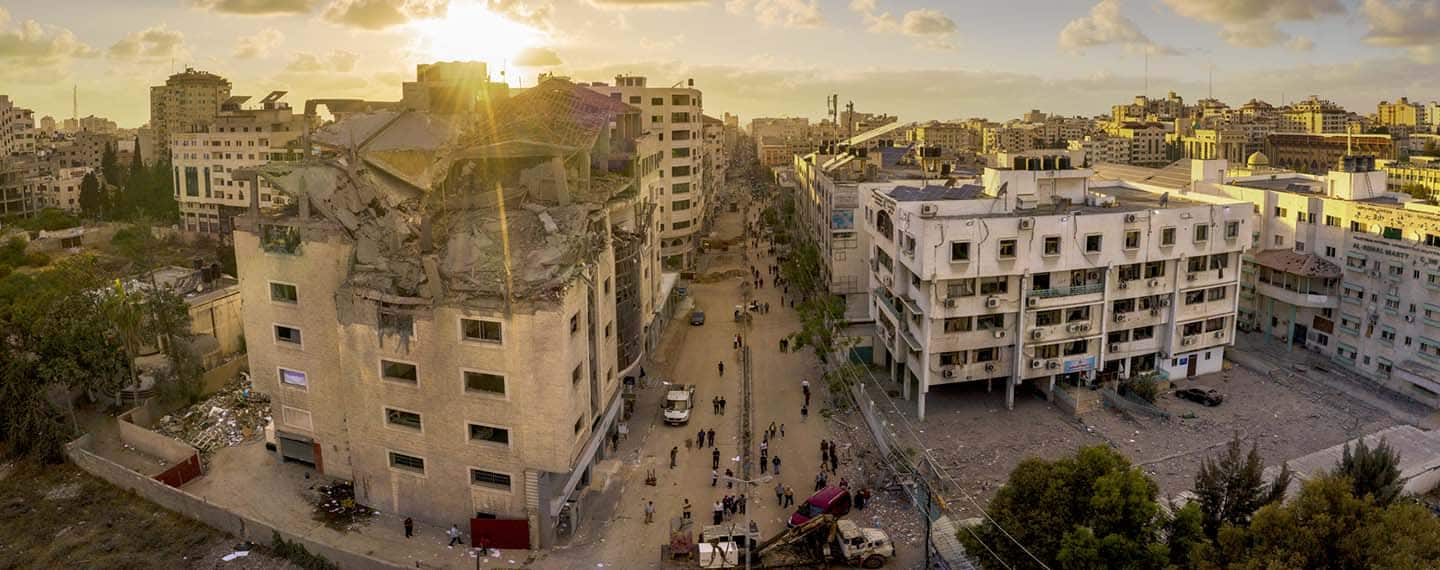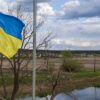In the aftermath of the atrocities committed in Rwanda and Bosnia in the 1990s, the UN set out to establish a new international norm that would prevent future crimes against humanity. This commitment, dubbed the Responsibility to Protect or R2P, challenged the sacrosanct notion of state sovereignty, asserting that if a nation fails to protect its citizens from grave harm, the international community has an obligation to intervene.
While the Responsibility to Protect has not been directly invoked regarding Israel’s actions in Gaza, South Africa charged Prime Minister Benjamin Netanyahu’s government with acts of genocide in the International Court of Justice on 11 January. The judgement on that case, which came down on 26 January, came short of demanding a ceasefire but did order Israel to ‘take all measures’ to prevent genocide.
The South African case underscores the need for objective, evidence-based analysis when considering accusations of genocide under the R2P framework. The integrity of the agreement depends on its application being grounded in credible evidence and legal principles, rather than being driven by political motivations.
Never again: the dark roots of an international consensus
During the civil war in Rwanda, the Hutu majority killed between 500,00-800,000 of the Tutsi ethnic group over a 100-day period in 1994. A year later, in the Bosnian Civil War, ethnic Serbs massacred more than 8,000 Bosnian Muslims in the town of Srebrenica. These events shook the global conscience and exposed the UN’s inability to fulfill its primary mandate, conceived in the aftermath of World War II, of preserving peace and preventing mass atrocities. Kofi Annan, the UN Secretary-General at the time, led an inquiry into these events and spearheaded the formation of the International Commission on Intervention and State Sovereignty in 2001. The result of that group’s deliberations was a document, adopted at the 2005 World Summit, which defined the Responsibility to Protect and made the protection of a state’s citizens a condition of sovereignty. The concept of R2P is based on three basic pillars:
- State responsibility: the primary duty to protect its citizens from genocide, war crimes, ethnic cleansing and crimes against humanity rests with the state itself.
- International assistance: if a state struggles, the international community should offer help to build its capacity for protecting its citizens.
- Collective action: should a state fail conspicuously in its duty to protect, the international community must intervene with appropriate measures, which can include, as a last resort, military action, but only with the authorisation of the UN Security Council.
The most notable invocation of the Responsibility to Protect came during the Libyan crisis in 2011, in which the international community under the auspices of NATO intervened to prevent imminent atrocities. The action is often cited as a successful example of R2P, although critics worried that NATO used R2P to replace the regime of Libyan leader Muammar Gaddafi rather than for civilian protection.
That same year, however, the Security Council did not invoke R2P in Syria despite severe civilian suffering stemming from that country’s civil war. China and Russia both vetoed any intervention, highlighting the difficulty of attaining consensus, one of the biggest obstacles in implementing R2P. Geopolitical complexities also constrained international action during Myanmar’s crackdown in 2016 on the Muslim Rohyinga people that has seen 25,000 killed and millions more forced to flee. International action under R2P was constrained due to a lack of consensus, with responses limited to sanctions and condemnations.
The shortcomings of the concept stem from fundamental issues within the international political system. The application of R2P is influenced more by political interests and power dynamics than by the humanitarian imperative. This inconsistency not only undermines the credibility of R2P but reflects a deeper malaise in the international system’s approach to human rights and protection.
Failing the humanitarian test: why not Gaza?
The current situation in Gaza, characterised by large-scale human suffering, extensive civilian casualties and dire living conditions due to blockades and military actions, aligns with the humanitarian imperatives at the heart of R2P. As of 22 February 2024, after four months of war, the death toll in Gaza due to the Israeli military attacks stands at over 29,000 according to the Palestinian Health Ministry. The number of Palestinians injured in Gaza is over 67,600. The number of casualties is probably higher as many bodies remain buried under rubble or in inaccessible areas. The ongoing conflict has resulted in a humanitarian crisis in Gaza, with millions of Palestinians facing displacement, food insecurity, and limited access to healthcare and other essential services.
Despite clear indications of humanitarian catastrophe and widespread international condemnation, the global response has been tepid, limited to calls for a ceasefire and the scaling back of military actions. The crisis highlights the limitations and failures of R2P and raises critical questions about the application of R2P and the factors inhibiting its implementation. The Israeli-Palestinian conflict is deeply entrenched in global politics, involving key players such as the US and the UK. These countries often have strategic alliances and interests in the region, leading to a reluctance to intervene against Israel. The political complexities and diplomatic sensitivities surrounding the conflict significantly hinder the consensus needed for R2P action. The UN Security Council, the primary body responsible for authorising collective action under R2P, is often divided on the Israeli-Palestinian issue. The veto power of permanent members has been a significant obstacle to achieving any agreement necessary for stronger measures.
Israel’s actions in Gaza are often explained under the pretext of self-defence, complicating the narrative around the humanitarian crisis. The current war in Gaza, for example, is a response to attacks by Hamas on 7 October 2023 in which more than 1,100 people were killed and 250 hostages taken. This argument is frequently used to justify military action in Gaza and is supported by key international players, making it challenging to frame the situation as one needing R2P intervention. The asymmetric nature of the Israeli-Palestinian conflict complicates the application of R2P. Israel has been recognised as a state actor by the UN since 1948, while Palestine is not recognised universally as a sovereign state, primarily due to the lack of complete control over its territory and is commonly categorised as a ‘non-member observer state’ at the UN.
Traditionally, R2P has been invoked in situations where state actors fail to protect their populations, not in complex, asymmetrical conflicts involving non-state actors and occupied territories.
South Africa takes the lead: reviving the spirit of Responsibility to Protect
The core aims of R2P are to protect vulnerable populations from crimes against humanity and to hold the perpetrators of mass atrocities accountable. By charging Israel with genocide in the International Court of Justice, South Africa has invoked the underlying principles and objectives of the Responsibility to Protect doctrine, even if it does not formally reference it.
While the original document defining R2P primarily envisaged a role for the UN Security Council, the essence of the doctrine is broader and includes the use of international legal channels to prevent and respond to mass atrocities. South Africa chose to bring its accusations against Israel to the International Court of Justice, which in 1949 was granted jurisdiction over violations of the Geneva Convention. The benefit of this approach is that Israel was a signatory to the Geneva Convention, although it is not a member of the ICJ and does not recognise its jurisdiction, which could impede the court’s ability to adjudicate disputes involving the country. The ICJ also lacks an enforcement mechanism, meaning its decisions depend on the compliance of the states involved. Even if Israel were found guilty of any accusations, the country would not be compelled to undertake specific actions or pay any penalties, limiting the ruling’s practical impact.
An important first step in stopping the suffering
The case marks Israel’s first appearance before the International Court of Justice on charges of violating the UN Genocide Convention. The 26 January verdict stopped short of ordering an end to the war in Gaza, but it did acknowledge Israel’s culpability in causing human suffering and ordered the country to take steps to avoid targeting civilians. The full ruling on whether Israel violated the Geneva Convention is expected to take years, but the UN can use the momentum from South Africa’s case to leverage the concept of Responsibility to Protect.
The fact that the case was even heard serves as a powerful symbolic condemnation of Israel. This moral pressure can incentivise parties towards a ceasefire. If the court upholds certain claims, it could trigger further investigations and pressure for accountability mechanisms, potentially fostering dialogue and creating conditions for a truce. The case could set a legal precedent for applying R2P in similar situations, influencing future responses to mass atrocities. If nothing else, it highlights the need to protect civilian populations and prevent mass atrocities, central tenets of R2P.
Elcano Comments
This is a new initiative of the Institute that aims to offer analyses by experts on topics that are within the scope of our research agenda. They are published on no regular basis but as opportunity arises in accordance with the advice of the broader academic community in cooperation with the Elcano Royal Institute.



